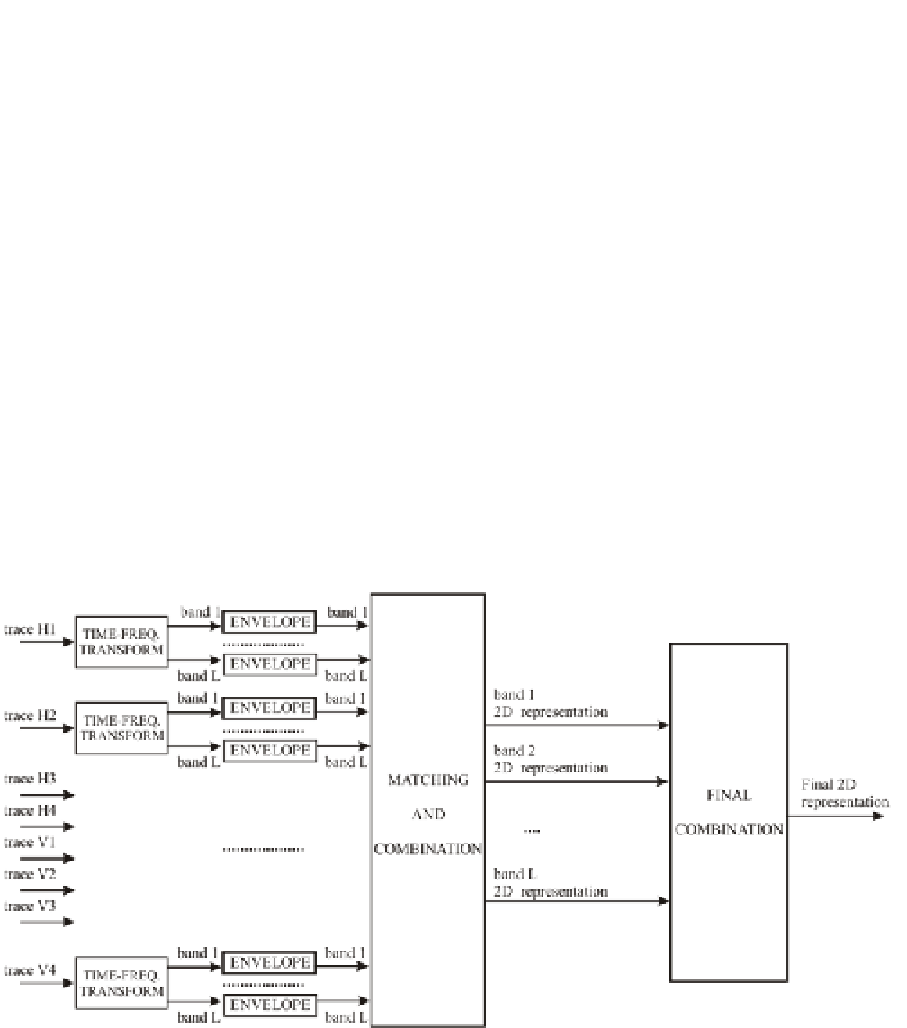Image Processing Reference
In-Depth Information
representations are the Short-Time Fourier Transform and the Wavelet transform
(Hlawatsch and Boudreaux-Barlets 1992). Both types of transforms can be implemented in
an easy way by means of linear filter banks.
In the present linear technique, the combination process begins with the time-frequency
representation of the all the acquired ultrasonic traces. A linear time-frequency transform is
applied and the frequency bands with maximum ultrasonic energy are selected in each
trace. The number of selected bands will be denoted as
L
. At this point, we have to resolve
L
problems similar to that presented in the previous time-domain combination method. In this
way,
L
separate 2D displays are produced, one for each frequency band. The final step is the
combination of these 2D displays by using a point-to-point product of them. A simple case,
where combination is performed by selecting the same frequency bands for all the
transducers, was presented in (Rodríguez et al 2004b), but also it could be possible to make
the combination by using different bands for each transducer. The method scheme is
presented in the Figure 2 for 4 horizontal and 4 vertical transducers.
Here, the combination for each frequency band is similar to the case of the time-domain
technique. Then, it will be necessary to make the following steps: a) to match in time the
common information of the different transducer pairs (for each frequency band), b) to
calculate the time-envelope for all the bands selected in each trace, c) to perform the
combinations obtaining several one-band 2D representations, and d) to fuse all these 2D
displays, so resulting the final 2D representation.
Fig. 2. Functional scheme of the linear time-frequency traces combination technique
The matching process can be common for all the frequency bands if the point number of the
initial traces is maintained and if the delays of the filtering process are compensated in each
band. The SNR of the 2D representation of each individual band,
(
band i
DTFlinear
)
SNR
is obtained
2
from expression (3).
(
band
i
)
SNR
()2
dB
SNR
()
dB
(4)
2
DTFlinear
ini

